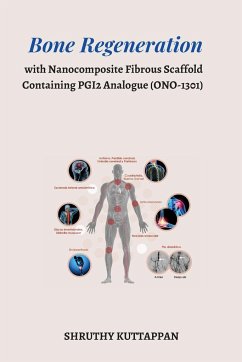The restoration of bone defects occurring as a consequence of trauma or pathologic conditions is a substantial clinical problem that needs the support of bone-graft to attain union. Biomaterials such as ceramics or composites proved to be osteoconductive and osteointegrative as its chemical composition matches native bone. However, they lack osteoinductive and vascularisation potential and fail to regenerate bone in critical sized defects. Bone fracture healing is a multifaceted event governed by mesenchymal stem cells (MSCs), endothelial cells etc and its secretary factors like vascular endothelial growth factor (VEGF), bone morphogenetic protein 2 (BMP2) and fibroblast growth factor (FGF2). However, high manufacturing cost and protein instability are the common limitations associated with growth factor-based therapeutic strategies. In contrast, 'small molecules' are stable biofactors that are available at cheaper rate and can be produced in reproducible quality. Hence small molecules with angiogenic and osteogenic properties could be considered as next-generation biofactors for orthopaedic therapeutics. Prostaglandins are small molecules that are enzymatically derived from arachidonic acid that are known to play important roles in bone formation and metabolism. ONO-1301 is a small molecular weight prostacyclin analogue that can augment angiogenesis. In addition, it stimulate the expression of stromal cell-derived factor-1 (SDF-1), resulting in enhanced migration of circulating bone marrow-derived stromal cells. There is one report that demonstrated that ONO-1301 can enhance bone regeneration in ectopic and orthotopic model when used in combination with BMP2. Nevertheless, this study did not show the mechanism of action of ONO-1301 on osteoblast cells and bone formation. Since bone repair is a complex process, it is important to understand the mechanism through which ONO-1301 act on bone tissue regeneration (chemotactic or angiogenic or osteoinductive role). Moreover, this study did not show the local and sustained release of ONO-1301 from a biomimetic bone graft for promoting bone regeneration.
